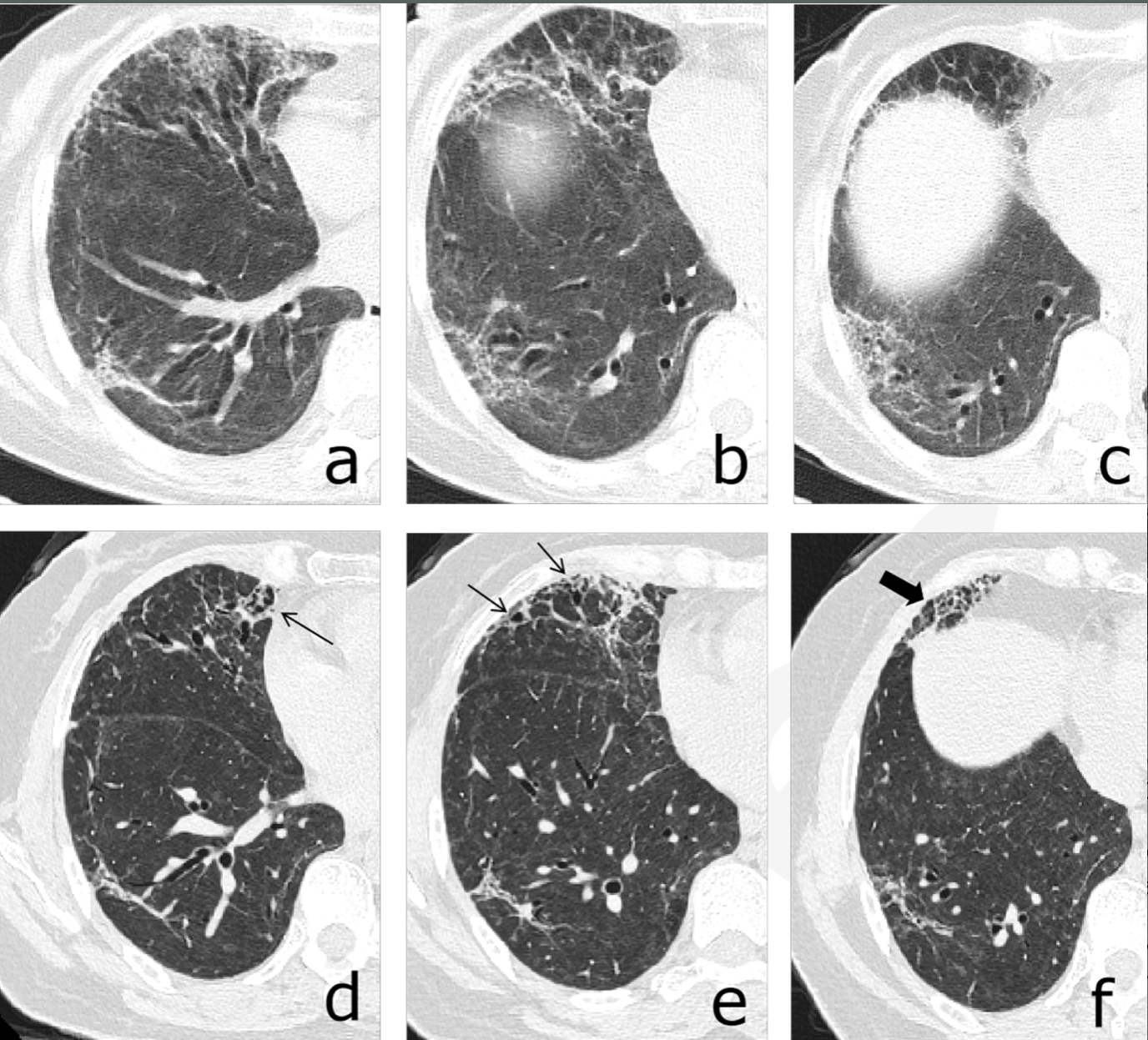Post-COVID-19, CT Reveals Potentially Lifetime Lung Damage in One-Thirds of Patients
Six-month follow-up CT scans show lingering fibrotic-like feature in more than one-third of recovered patients.
Statistics revealed this week that January has been the deadliest month of the COVID-19 pandemic. Now, research is showing that the after-effects could linger in recovered patients for a lifetime.
Findings published in the Jan. 26 Radiology show that even if a patient recovers, his or her lungs might suffer permanent pulmonary abnormalities. And, there is still much to learn, according to study authors from the United States and China.
Based on a study of six-month follow-up CT scans from a group of 114 patients who recovered from severe COVID-19 pneumonia and were discharged between Dec. 25, 2019, and February 20, 2020, researchers determined 62 percent still have evidence of abnormalities on the scans. Among that group, 35 percent had fibrotic-like features that could indicate potentially permanent damage, such as honeycombing patterns and parenchymal bands. In addition, the team determined that acute respiratory disease syndrome (ARDS) was also more common in patients who had lingering lung changes, affecting 63 percent of individuals.
Serial CT scans of a 46-year-old woman with severe COVID-19 pneumonia. (a-c) The scan obtained on day 32 after symptom onset showed multiple ground-glass opacities (GGOs) and interstitial thickening with mild cylindrical traction bronchiectasis involving the middle lobe and lower lobe of the right lung. (d-f) The scan obtained on day 198 showed partial absorption of the abnormalities, reduced extension, traction bronchiectasis (thin arrows) and localized “honeycombing” (thick arrow) in the subpleural region of the right middle lobe. Courtesy: RSNA

But, the permanency of this damage remains in question, said the research team led by Heshui Shi, M.D., from Union Hospital, Tongji Medical College, Huazhong University of Science and Technology.
“It remains uncertain whether the fibrotic-like changes observed in this study represent true fibrotic lung disease, e.g. at pathology or on longer-term follow-up CT,” Shi’s team said. “Whether or not these fibrotic-like changes, found at six months, reflect permanent change in the lung remains to be investigated.”
Even though these results do not put the question of lifetime damage to bed, there were several common features that pointed to the likelihood that a patient would have lung fibrotic-like changes at the six-month follow up. In particular, Shi’s team pinpointed being over age 50, having a heart rate more than 100 beats per minute at admission, being in the hospital longer than 17 days, ARDS, non-invasive mechanical ventilation, and a chest CT score greater than 18 on initial scans as independent predictors.
Serial CT scans of a 57-year-old man with severe COVID-19 pneumonia. (a, b) Axial and coronal thin-section CT scans obtained on day 9 after the onset of symptoms showed extensive ground-glass opacities (GGO) and interstitial thickening bilaterally. (c, d) Scans obtained on day 46 showed evolution to a mixed pattern of ground-glass opacities and consolidation with almost the same extent of lesions. (e, f) Scans obtained on day 159 showed a marked decrease in the density of GGO, with a slightly increased extension of the GGO (“tinted” sign or “melting sugar” sign, which defined as an imaging appearance of increased extension of the GGO or consolidation and decreased density). Courtesy: RSNA

Shi’s team was not the only group with uncertainty around these findings. In an accompanying editorial, investigators from Imperial College London’s National Lung & Lung Institute also expressed doubt. According to a group of experts led by Athol U. Wells, M.D., a chest physician at Royal Brampton Hospital, fibrosis-like findings on CT tend to diminish over time when patients recover from other SARS viruses. The same outcome could be possible with COVID-19, they said. In addition, questions remain about whether all the identified abnormalities that Shi’s team labeled as fibrotic-like necessarily indicate irreversible disease in a post-ARDS environment, as well as whether the non-fibrotic CT patterns are histologically and clinically significant.
To answer these questions, future investigations should follow patients for more than a year, Wells’ team said, to see if the abnormalities seen on CT at six months remain or reduce as is common in other forms of diffuse alveolar damage.
“[The] study…is an important addition to the literature because it documents the existence of residual CT abnormalities at six months in a large proportion of patients with severe COVID-19 infection. It is helpful for clinicians to know that this outcome is linked separately to ARDS, the use of mechanical ventilation, and extensive disease on CT during the acute episode,” Wells’ team said. “But, there are many unanswered questions that future works must explore.”
For more coverage based on industry expert insights and research, subscribe to the Diagnostic Imaging e-Newsletter here.
Meta-Analysis Shows Merits of AI with CTA Detection of Coronary Artery Stenosis and Calcified Plaque
April 16th 2025Artificial intelligence demonstrated higher AUC, sensitivity, and specificity than radiologists for detecting coronary artery stenosis > 50 percent on computed tomography angiography (CTA), according to a new 17-study meta-analysis.
The Reading Room: Racial and Ethnic Minorities, Cancer Screenings, and COVID-19
November 3rd 2020In this podcast episode, Dr. Shalom Kalnicki, from Montefiore and Albert Einstein College of Medicine, discusses the disparities minority patients face with cancer screenings and what can be done to increase access during the pandemic.
Could Lymph Node Distribution Patterns on CT Improve Staging for Colon Cancer?
April 11th 2025For patients with microsatellite instability-high colon cancer, distribution-based clinical lymph node staging (dCN) with computed tomography (CT) offered nearly double the accuracy rate of clinical lymph node staging in a recent study.